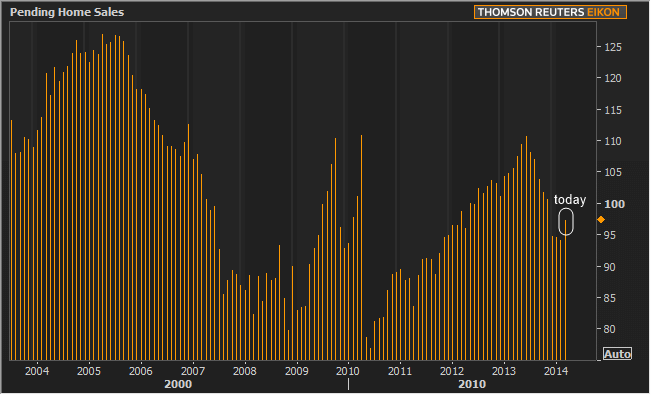Contracts for home purchases ended a dismal nine-month downturn in March marked by the first improvement in the Pending Home Sales Index (PSHSI) published by the National Association of Realtors® (NAR) since mid-summer. The Index ended its long drought, rising from 94.2 in February to 97.3 in March, a 3.4 percent improvement. The March PHSI was still 7.9 percent below one year earlier when it stood at 105.7. NAR's index is a forward-looking indicator based on contract signings rather than actual sales. Contracts are usually finalized as sales within about 60 days of contract signings.

Home sales are expected to trend up over the course of the current year and into the next but with 2014's slow start NAR projects that sales this year will fall short of those in 2013. The Association is projecting a total of 4.9 million home sales in 2014 compared to nearly 5.1 million in 2013.
Lawrence Yun, NAR chief economist called the March gain inevitable. "After a dismal winter, more buyers got an opportunity to look at homes last month and are beginning to make contract offers," he said. "Sales activity is expected to steadily pick up as more inventory reaches the market, and from ongoing job creation in the economy."
Despite the lower home sales in 2014, NAR is projecting that inventory shortages will continue in much of the country. This should continue to drive home prices higher and the median existing price is projected to grow between 6 and 7 percent this year.
The PHSI in the Northeast increased 1.4 percent to 78.8 in March, but is 5.9 percent below a year ago. In the Midwest the index slipped 0.8 percent to 94.5 in March, and is 10.1 percent below March 2013. Pending home sales in the South rose 5.6 percent to an index of 112.7 in March, but are 5.3 percent below a year ago. The index in the West increased 5.7 percent in March to 91.0, but is 11.1 percent below March 2013.
The PHSI is tied to an index of 100 which is equal to the average level of contract activity during 2001, the first year to be examined. By coincidence the volume of existing-home sales in 2001 fell within the range of 5.0 to 5.5 million which is considered normal for the current U.S. population.







